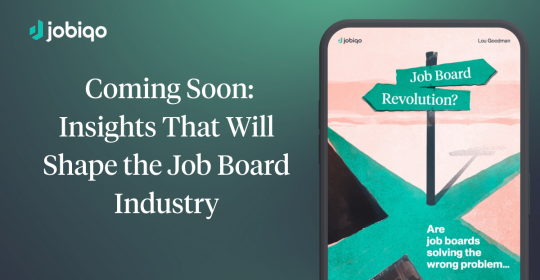Think about this: according to a survey, companies that reward their people well hit their goals 79% of the time. Mind-blowing, right? But it's not just about making their team members smile—it's about moving the business up a notch.
Those companies that are super good at patting their employees on the back are creating a happier workspace and seeing their productivity and profits take off.
If you're all fired to amp up your organization and power up your people, you've landed in the right spot. Let's discuss a top-level incentive program to drive your team and business into overdrive.
Determine the Objectives and Goals
Think of it as plotting a journey. You would only start with knowing your destination, right? The same goes for your incentive program. You need a clear, overarching objective, and it's your guiding north star. This could be anything from increasing sales, enhancing customer service ratings, or boosting employee morale. The crucial part is it must align with your broader business strategy.
Then, you have your goals. These are your milestones along the way, measurable checkpoints that ensure you're heading in the right direction. Let's say your objective is to boost sales. A goal could be a 10% increase in average transaction value over the next quarter.
Creating an incentive program is about more than just distributing rewards. It's a strategic initiative to propel your team's performance and your business's success. So, before diving into the program's specifics, clearly articulate your objectives and goals. It ensures a focused approach and a successful journey toward your destination. Trust me, having a roadmap makes all the difference.
Analyze the Company Culture and Values
Imagine going shopping for a friend's birthday present. You wouldn't just grab the first thing you see, would you? No, you'd consider what they like, their tastes, and preferences. The same goes for your incentive program. You need to understand the 'personality' of your company.
Your company culture and values, they're your company's personality traits. They guide how your team works, communicates, and celebrates achievements. So, what kind of culture does your company have? Is it competitive or collaborative? Formal or casual? High-stress or laid-back?
And then there are your values. These core beliefs that drive your company are integrity, innovation, teamwork, and customer satisfaction. What matters is that these values resonate with your team because they're the guiding principles everyone stands behind.
Ensuring it aligns with your culture and values is essential when designing your incentive program. Why? Because an incentive program that doesn't match your company's personality is like giving a book to someone who hates reading—it just won't be appreciated.
So take the time to analyze your company culture and values. It's the key to crafting an incentive program that your team will genuinely engage with, driving the results you're after.
Identify the Target Audience
Identifying your target audience is pivotal in creating an effective employee incentive program. This process involves pinpointing the group or groups within your organization that your incentive program aims to motivate.
Your target audience could be a specific team, such as sales or customer service, a certain level of employees, or the entire organization. Each group will have unique drives and motivations that your incentive program should address.
For example, a sales team may respond well to competitive incentives like bonuses or commission increases tied to performance metrics. On the other hand, a customer service team might find incentives such as recognition awards, additional time off, or employee training and development opportunities more motivating.
Ensuring a diverse mix of incentives is needed when the program is intended to cover the entire organization. This approach caters to a diverse workforce's range of motivations and preferences.
Understanding your target audience—their roles, motivations, and the rewards they value—is integral to developing a program that effectively engages and motivates your employees. In preparing your incentive packages, consider inviting your employees to explore gift card options as an innovative reward. This understanding allows for a customized, strategic incentive program that drives employee performance and business success.
Develop a Budget
Developing a budget forms the financial backbone of an effective employee incentive program. This step ensures the appropriate allocation of funds, guaranteeing the program's sustainability and success.
- Costs of Incentives
The cornerstone of your budget is, of course, the incentives themselves. These could be monetary bonuses, exclusive experiences, gifts, or professional development opportunities. Recognize that each type of incentive carries distinct costs, which must be factored into the overall budget.
- Operational Expenses
Beyond the direct costs of the incentives, operational expenses also form a significant part of your budget. This includes potential investments in management software for tracking and administering the program. It could also cover communication costs associated with promoting the program to your employees. Overlooking these administrative expenses can lead to an underfunded and inefficiently managed program.
- Balancing Costs and Returns
An integral part of developing a budget is evaluating the anticipated return on investment. An effective incentive program has the potential to boost productivity, enhance employee morale, and reduce turnover rates. While these improvements positively influence your bottom line, ensuring the program's costs are within these benefits is vital.
- Ensuring Fairness and Sustainability
A successful budget also factors in fairness and long-term sustainability. Funds should be distributed equitably among eligible employees, avoiding any perception of favoritism. Equally, the budget should support the program in the long term, as a strong start followed by a decline due to inadequate funding can demoralize employees.
Define the Incentives
Determining incentives is a central task when designing an effective employee incentive program. The incentives are the rewards that employees receive for their efforts and achievements, and they motivate and engage, driving performance and contributing to the organization's success.
- Monetary Incentives
Monetary incentives are common for many businesses, including bonuses, raises, stock options, or profit-sharing schemes. Such incentives directly benefit employees and can be powerful motivators, mainly when linked to specific, measurable goals or targets.
- Non-Monetary Incentives
Non-monetary incentives, while not offering direct financial gain, can be just as impactful. These can encompass various rewards, from additional vacation days, flexible work schedules, professional development opportunities, recognition programs, and wellness benefits.
Non-monetary incentives often enhance employees' quality of life and significantly boost morale and job satisfaction.
- Aligning Incentives with Employee Preferences
A crucial part of defining the incentives involves aligning them with employee preferences and the company's objectives. Conducting surveys or discussions can provide valuable insights into what types of incentives would be most appreciated and effective.
- Communicating the Incentives
Once the incentives are defined, they should be communicated to all eligible employees. Transparency in the nature, value, and criteria for earning the incentives is crucial to ensuring the program's effectiveness.
Create Clear and Measurable Criteria for Performance
Creating clear and measurable criteria for performance is very important for the success of any employee incentive program. These criteria, which should be detailed and quantifiable, form the yardstick against which employee performance is assessed and rewards are distributed.
The essence of effective criteria lies in specificity. Broad or vague goals can lead to confusion and a lack of direction. Instead, measures should be concise and focused, giving employees a clear understanding of what is expected. For example, a goal like improving customer service could be refined to achieve a customer satisfaction score of 90% or above.
Quantification is key. Each criterion must be measurable, allowing for objective evaluation of performance. For this, a system must be in place to track progress and document achievements.
Whether it's sales figures, project completion rates, or customer satisfaction scores, these metrics provide a tangible way for employees to gauge their performance and strive for improvement.
Aligning performance criteria with both the employee's role and the company's broader objectives is essential. The targets must be not only relevant but also realistic. Setting attainable goals can lead to satisfaction and demotivation, negating the very purpose of the incentive program.
Each criterion should also be time-bound. Deadlines create a sense of urgency and can help prioritize efforts, driving employees toward achieving their goals on time.
Establish a System for Tracking and Reporting Progress
Establishing a reliable system for tracking and reporting progress is critical to an effective employee incentive program. This mechanism allows objective performance evaluation, develops a sense of accountability, and ensures employees stay informed about their progress.
- Choosing a Tracking System
The tracking system can vary based on the specific performance criteria. It may range from a basic spreadsheet listing sales numbers to a comprehensive KPI software platform that monitors various performance indicators in real time. The tracking system should be precise, dependable, and user-friendly regardless of complexity.
- Role of Regular Reporting
Consistent reporting complements the tracking system. Regular feedback on performance helps employees understand how close they are to achieving their targets and qualifying for their incentives. Additionally, it helps in the early detection of any potential obstacles, thereby enabling timely corrective measures.
- Promoting Transparency
Transparency is a critical factor in the process. Employees should have easy access to their performance data and understand the evaluation methodology. This transparency builds trust in the incentive program and fosters a sense of fairness.
- Scalability of the System
Scalability is another essential feature of the tracking and reporting system. As the company grows and evolves, the system should be capable of adapting and expanding to meet changing requirements.
Launch the Incentive Program with a Clear Communication Plan
Transparent and timely communication ensures all employees understand the program's objectives, their roles, and the rewards they can earn.
-
Communicate the Program's Purpose
The communication plan should start with clearly articulating the program's purpose. Employees must understand how the incentive program aligns with the organization's broader goals and how their individual and collective efforts contribute to overall success.
-
Detailing the Program's Structure
The next step is detailing the structure of the incentive program. This includes explaining the types of incentives on offer, the performance criteria employees need to meet to earn these incentives, and the system for tracking and reporting progress. Employees should clearly understand what is expected of them and how their performance will be evaluated.
-
Providing Regular Updates
Once the program is underway, regular updates are essential. These updates should share individual and collective progress, celebrate achievements, and provide constructive feedback where necessary. Regular communication keeps employees engaged and motivated and allows for any adjustments required to the program.
-
Inviting Feedback and Queries
Lastly, the communication plan should invite feedback and queries from employees. This two-way communication not only helps employees feel heard and valued, but it can also provide insights for improving the program.
Evaluate and Adjust the Program Regularly
Keeping your employee incentive program on track for long-term success calls for regular evaluation and timely adjustments. It's a proactive strategy that ensures the program stays potent, stays relevant, and moves in tandem with the changing objectives of your organization.
Assessing the program against its initial aims is crucial to this regular evaluation. You need to ask: Are the incentives motivating the right behaviors? Are the defined goals being met? The answers to these questions provide insights into the program's effectiveness and spotlight areas that need refining.
Another vital aspect is gathering feedback directly from your employees. Their on-the-ground experiences and viewpoints reveal a wealth of information about the program's performance and show where tweaks might be beneficial. Use regular surveys or casual conversations as your tools to gather this feedback.
Based on the evaluation and feedback, program changes can be made. Whether it's modifying the incentives, adjusting the performance standards, or refining the progress tracking and reporting systems, the adjustments should always keep the program in sync with your organization's goals and maintain its motivating and engaging nature for the employees.
When changes are made, it's crucial to communicate them clearly and quickly to all employees. Transparency in this process is critical in preserving trust in the program and ensuring employees remain engaged.
Top Free Tools To Help You Design an Effective Employee Incentive Program
Survey and Feedback Tools
Survey and feedback tools are essential for organizations to improve employee engagement, gather insights, and make data-driven decisions.
-
Google Forms
Google Forms is a versatile online tool that allows users to create custom surveys and questionnaires. Its simplicity and integration with other Google products make it popular for gathering feedback and conducting research. It provides real-time responses and automatically generates helpful summary charts for a glance at the collected data.
-
SurveyMonkey
SurveyMonkey is a powerful online survey tool known for its various question types and pre-made templates. It provides in-depth analysis tools, enabling organizations to delve into the data, find patterns, and derive actionable insights. Its ability to export data to various formats makes it a versatile choice for different needs.
Goal-Setting and Tracking Tools
Goal-setting and tracking tools are indispensable for organizations aiming to streamline their project management processes and boost productivity.
-
Asana
Asana is a perfect project management tool that facilitates efficient work organization, tracking, and management. It lets you decompose projects into digestible tasks, delegate them to your team, and monitor progress.
Its user-friendly interface and extensive features such as custom fields, automated reminders, and seamless integration with other tools simplify project management. Asana helps teams stay on top of their work and achieve their goals.
-
Trello
Trello is an all-purpose project management tool using a card-and-board system to organize and prioritize tasks. Each card represents a task, and boards can be modified to reflect various project stages.
The drag-and-drop feature, the ability to attach files and deadlines to cards, and options for team collaboration make Trello a visual, interactive, and efficient way to manage projects. It’s suitable for a wide range of uses, from individual task management to coordinating larger team projects.
Recognition and Rewards Platforms
Recognition and rewards platforms are essential for employee engagement, morale, and productivity by acknowledging their accomplishments and offering tangible rewards.
-
Bonusly
Bonusly is an employee recognition and rewards platform that makes acknowledging peer contributions a breeze. The tool allows employees to give micro-bonuses to their colleagues, promoting a culture of recognition and appreciation. With its vast catalog of rewards, ranging from gift cards to charity donations, and an interface encouraging participation, Bonusly helps organizations create an engaging, inclusive, and positive work environment.
-
Kazoo
Kazoo is a holistic employee experience platform that combines recognition, rewards, and performance management. It empowers employees to recognize their peers' achievements, aligning this recognition with company values for maximum impact. With Kazoo, companies can offer various rewards, track performance, and gather actionable insights to improve engagement. Its customizable interface and robust features make it an ideal tool for organizations aiming to foster a culture of recognition and high performance.
Communication and Engagement Tools
Effective communication and engagement tools are the backbone of any successful team, building collaboration, productivity, and cohesive work culture.
-
Slack
Slack is a powerful communication tool that brings all team conversations together. Its channel-based messaging system allows for topic-specific discussions, promoting better organization and focus.
From direct messages to group chats and file sharing to video calls, Slack offers a range of features that foster real-time collaboration. Its ability to integrate with many other tools further enhances its functionality, making it a top choice for teams looking for efficient communication solutions.
-
Microsoft Teams
Microsoft Teams is a unified communication and collaboration platform that combines persistent workplace chat, video meetings, file storage, and application integration. It's particularly beneficial for businesses heavily invested in the Microsoft ecosystem, as it integrates smoothly with other Microsoft applications like Word, Excel, and PowerPoint.
With Teams, you can host virtual meetings, share files, collaborate on documents in real time, and even integrate with third-party applications, making it a comprehensive solution for team communication and collaboration needs.
Performance Evaluation and Feedback Tools
Performance evaluation and feedback tools provide a structured approach to assess employee performance, identify areas of improvement, and offer constructive feedback, driving personal growth and overall organizational success.
-
15Five
15Five is a performance management tool offering features designed to boost employee engagement and productivity. The platform provides a structured way to set and track objectives, solicit feedback, conduct weekly check-ins, and even recognize peers, all contributing to a transparent and high-performing work culture.
15Five's focus on open communication and alignment with company goals makes it an effective solution for businesses seeking a comprehensive approach to performance management.
-
Lattice
Lattice is a people management platform combining performance reviews, employee engagement, and analytics. It offers customizable review cycles, goal setting, feedback tools, and more, providing a comprehensive performance management and employee development solution.
You can create an environment of continuous feedback and learning, empowering employees to grow and contributing to overall company success. Its focus on a streamlined user experience and flexibility make it a popular choice for modern, forward-thinking companies.
Related Questions
-
What types of incentives work best for employees?
Incentives can vary widely based on your company culture, the nature of the work, and the individual preferences of your employees. Some may appreciate monetary bonuses or gift cards, while others value extra vacation days or flexible work schedules.
-
How often should I revise the incentive program?
The frequency of revisions depends on the results you're seeing and the feedback you're receiving. If you notice a dip in engagement or hear from employees that certain aspects aren't as motivating as they used to be, it might be time for a review and adjustment.
-
Can small businesses also benefit from employee incentive programs?
Absolutely! Employee incentive programs aren't just for large corporations. Small businesses can also reap the benefits of a well-designed program, often seeing increased productivity and employee satisfaction.
-
What are some common pitfalls to avoid when designing an incentive program?
Some common pitfalls include setting unachievable goals, offering extrinsic incentives, failing to communicate the program effectively, and not seeking employee input during the design process.
Conclusion
We have gone through the ins and outs of designing an effective employee incentive program. It starts with setting clear objectives and understanding your company culture and employee motivations. Budgeting wisely, defining meaningful incentives, and establishing measurable performance criteria lay the groundwork for a successful program.
Tracking progress, launching with clear communication, and regularly adjusting the program are crucial for long-term effectiveness. Remember, this isn't a one-time task; it requires constant attention. But the payoff? A motivated, productive team that drives your business forward.
Now it's your turn to create an outstanding incentive program that resonates with your team and aligns with your business goals. If you found this guide helpful, why not spread the knowledge? Share this blog with your colleagues, friends, or anyone who might benefit from understanding how to create an effective employee incentive program.






